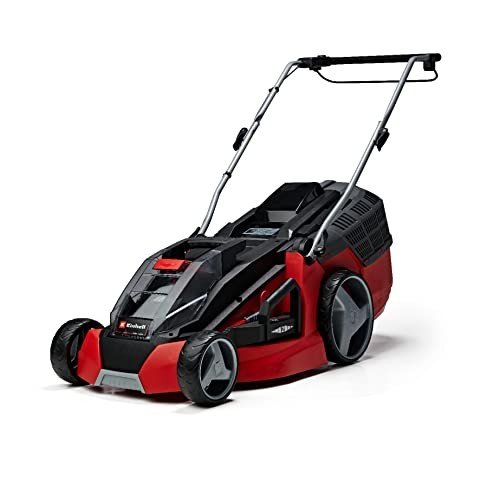The Comprehensive Guide to Power Tools: Understanding Their Types, Uses, and Maintenance
Power tools are vital in the modern-day workshop, allowing jobs that would otherwise be tiresome and time-consuming when performed with hand tools. Ranging from standard drills to complex woodworking machines, power tools offer performance and accuracy that can dramatically alter the way experts and hobbyists approach their jobs. This short article explores the numerous kinds of power tools, their applications, maintenance pointers, and often asked questions.
Types of Power Tools
Power tools are generally classified into two main groups: cordless and corded. Each type has its advantages and perfect uses.
1. Cordless Power Tools
Cordless tools run on rechargeable batteries, providing greater mobility and ease of usage. Some common types include:
- Cordless Drill/Driver: Essential for drilling holes and driving screws, a cordless drill is a must-have in any toolbox.
- Cordless Circular Saw: Ideal for cutting lumber and other materials, specifically when portability is required.
- Cordless Jigsaw: Useful for making complex cuts and curves in numerous materials.
- Cordless Impact Driver: Perfect for driving long screws and fasteners into hard products rapidly.
2. Corded Power Tools
While corded tools may be less portable, they usually provide more power and are often utilized for heavier-duty tasks. Secret examples consist of:
- Table Saw: A stationary tool that offers precision cutting for woodworking projects.
- Miter Saw: Used for making accurate crosscuts and miters in a workpiece.
- Angle Grinder: Useful for cutting or grinding metal and concrete.
- Drill Press: A fixed drill that enables for accomplishing greater accuracy in drilling holes.
Contrast Table of Cordless and Corded Power Tools
| Function | Cordless Power Tools | Corded Power Tools |
|---|---|---|
| Movement | High | Minimal by power cord |
| Power | Less powerful | More powerful |
| Weight | Lighter due to lack of cord | Heavier due to motor and cord |
| Battery Life | Limited by battery life | Continuous power supply |
| Expense | Normally more pricey | Normally more affordable |
Applications of Power Tools
Power tools are utilized across different markets and activities. Comprehending the right tool for the task can enhance efficiency and outcomes. Some typical applications include:
- Construction Projects: Drills, saws, and nailers dominate task websites for framing and roofing.
- Woodworking: Routers, sanders, and jointers assist in producing intricate and sleek wood pieces.
- Automotive Repair: Impact wrenches and air compressors are vital for working on cars.
- Home Improvement: DIY lovers use various tools for remodellings, repair work, and landscaping jobs.
Popular Power Tools and Their Uses
Here are some regularly utilized power tools in addition to their primary applications:
Power Drill:
- Used for drilling holes and fastening screws.
- Comes in various sizes for different applications.
Reciprocating Saw:
- Ideal for demolition work and cutting through materials like wood, metal, and drywall.
Sander:
- Used for smoothing surfaces, available in different types such as orbital and belt sanders.
Router:
- Employed in woodworking for hollowing out an area in a piece of wood.
Nail Gun:
- A quick and efficient tool for driving nails into wood and other products.
Upkeep Tips for Power Tools
Keeping power tools in optimal condition is vital for security and efficiency. Here are some upkeep suggestions:
- Regular Cleaning: Dust and debris can build up in power tools. Routine cleansing assists preserve efficiency and extends tool life.
- Examine Connections and Cords: Regularly inspect for fraying or damage to cords and connections. Change any broken parts immediately to prevent accidents.
- Hone Blades and Bits: Dull blades can reduce efficiency and precision. Routine honing guarantees tidy cuts and faster operation.
- Lubrication: Certain tools require routine lubrication. Seek advice from the user handbook for specific suggestions.
- Storage: Store tools in a dry environment and in their cases if offered. This secures them from wetness and accidental damage.
Regularly Asked Questions (FAQs)
1. What security equipment should be used when utilizing power tools?
- It is vital to wear appropriate safety gear such as security glasses, hearing protection, gloves, and a dust mask depending upon the tool in usage.
2. How do I pick the right power tool for a task?
- Think about the particular tasks you require to achieve, the product you'll be working with, and the tool's power capability. Researching tools suited for those jobs will assist in making the ideal option.
3. Are cordless tools as good as corded tools?
- Cordless tools offer convenience and portability, while corded tools provide more power for much heavier tasks. Pick based upon your specific needs.
4. How often should power tools be preserved?
- Routine maintenance needs to be carried out routinely, ideally after every usage. Comprehensive inspections and maintenance need to be done at least as soon as a year.
5. What is www.powertoolsonline.uk of a typical power tool?
- The life-span of power tools differs extensively depending on use and quality however generally ranges from 5 to 15 years.
Power tools are important assets for both experts and DIY enthusiasts, offering efficiency and precision unlike any hand tool. Comprehending the various types, applications, and maintenance procedures is important for optimizing their prospective and guaranteeing security. With appropriate care and knowledge, these tools can serve users effectively for numerous years, eventually enhancing efficiency and task outcomes. By purchasing quality tools and adhering to maintenance rituals, one can make the most out of every job, irrespective of size or intricacy.

